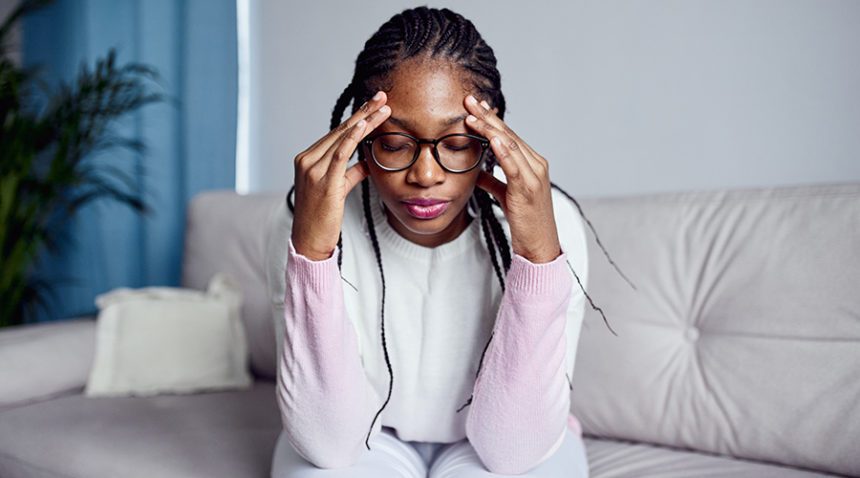Imagine a headache so painful that you would beat your head against a wall to try to counter the agony with a different type of pain.
Horribly, that’s what some people with cluster headaches do when these excruciating headaches hit. The attacks have been described as having a pain level of 10 out of 10. On average, they last between 45 minutes and three hours, and they can occur up to eight times a day for weeks, says UNC Health neurologist Gary W. Jay, MD.
Cluster headaches cause severe pain on one side of the head, often behind the eye or at the temple. People also experience eye redness, tearing of the eye, and a runny or stuffy nose on the same side as the headache.
Unlike people who have migraine or tension headaches who might be able to rest or sleep during an attack, people experiencing cluster headaches are restless. They may pace, rock or even scream.
“They’re so agitated, they can’t lie down or sit still,” Dr. Jay says. Fortunately, cluster headaches are rare, and treatment can help.
The Worst Kind of Headache
Dr. Jay, who has studied headaches for more than four decades, says cluster headaches are known as “suicide headaches.” Studies show that more patients with cluster headaches consider, plan or attempt suicide than those with any other headache type.
Cluster headaches are a primary headache disorder, meaning the headache is the problem and it is not a symptom of another underlying disease. The attacks come in groups, or clusters, that can last for weeks or months, followed by a period of remission of months or even years during which no headaches occur. However, some people have chronic cluster headaches with no remission periods.
The headaches typically start between ages 20 and 50, and men are five to six times more likely to develop them, Dr. Jay says. While the condition may run in families, its genetics are not fully understood.
Cluster headaches are not common, Dr. Jay says. Fewer than half of patients who are referred to him for cluster headaches actually receive the diagnosis. But it is traumatic for those who do have it, he says.
One person with cluster headaches described them as “a very powerful, extremely violent, brutal and traumatic attack that feels physically like you’re taking or just took a brutal and cruel beating on the inside of your eye and inside one side of your head.”
Frequently, the attacks happen at night, waking the people who are experiencing them. Dr. Jay has observed that many patients seem to get cluster headaches at the same time each year, in reaction to the body’s circadian rhythms (internal clock).
Finding Relief from Excruciating Headache Pain
Cluster headaches typically are treated with triptans, a common class of migraine drugs, either by injection or nasal spray, Dr. Jay says. An oral medication, such as a tablet, may take too long to work. However, since the headaches tend to occur about the same time every day, patients may be able to anticipate the pain and take preventive medication before a cluster episode begins.
An older treatment for cluster attacks is high-flow oxygen therapy, which may relieve cluster pain in 15 minutes or less, says Dr. Jay, who helped pioneer the technique in 1980. Experts don’t fully understand why high-flow, 100 percent oxygen relieves cluster headaches, but it’s effective for some people. A regular oxygen tank or concentrator, like a person with chronic obstructive pulmonary disease might use, is not sufficient for cluster headaches. Special non-rebreather masks and high-flow tanks are required. Unfortunately, Medicare does not pay for this treatment, and other insurers generally follow the same guidelines.
Another reason for hope: In 2019, the Food and Drug Administration approved an injectable solution (galcanezumab-gnlm), calling it the first treatment for episodic cluster headache that reduces the frequency of attacks.
“It’s important that doctors and patients understand what these headaches are and what the best treatments are,” Dr. Jay says. “This is the worst kind of headache.”
If you have frequent or painful headaches, talk to your doctor, or find one near you.

